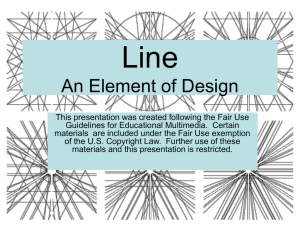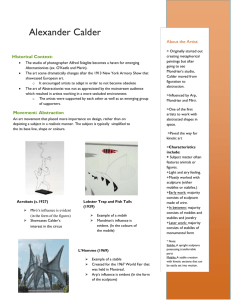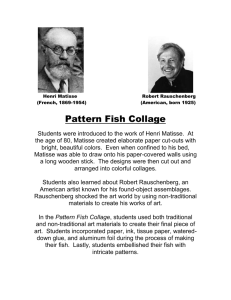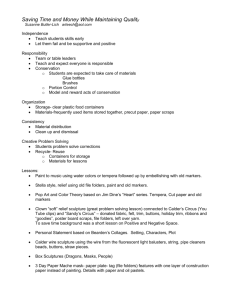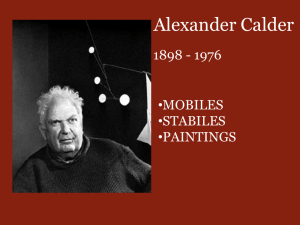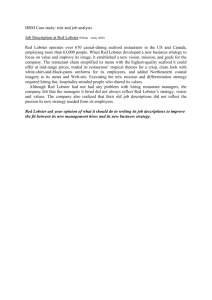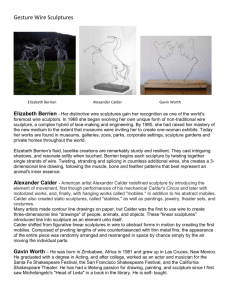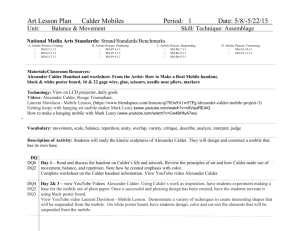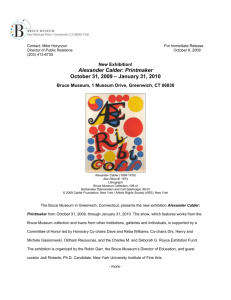Modern Art Lesson 4
advertisement
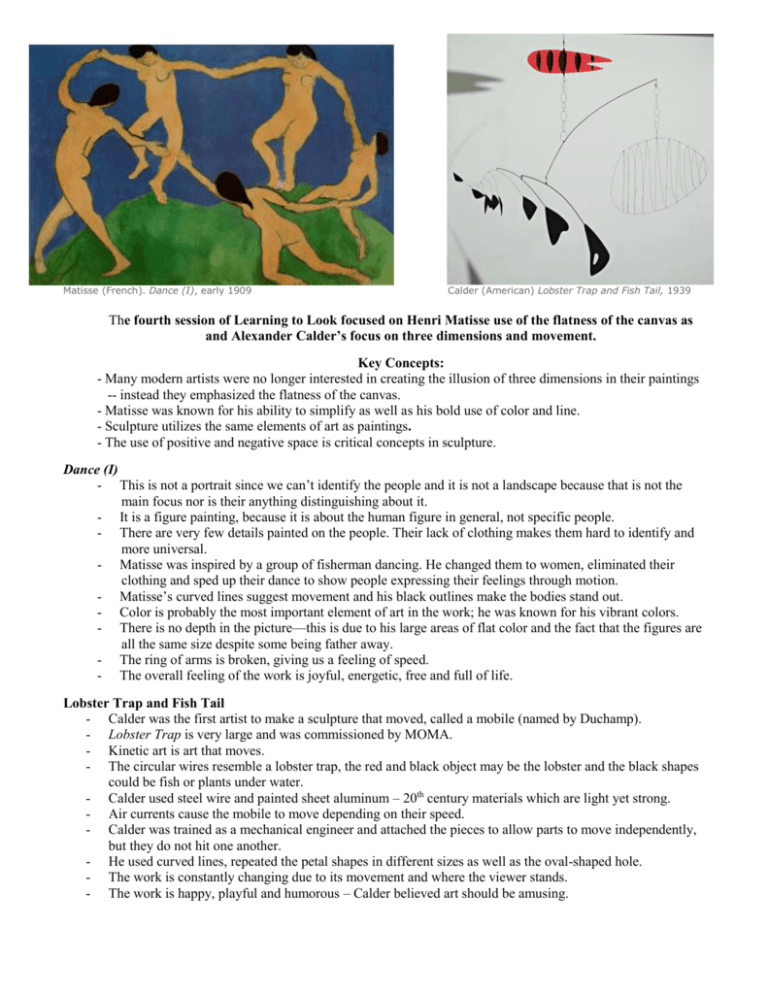
Matisse (French). Dance (I), early 1909 Calder (American) Lobster Trap and Fish Tail, 1939 The fourth session of Learning to Look focused on Henri Matisse use of the flatness of the canvas as and Alexander Calder’s focus on three dimensions and movement. Key Concepts: - Many modern artists were no longer interested in creating the illusion of three dimensions in their paintings -- instead they emphasized the flatness of the canvas. - Matisse was known for his ability to simplify as well as his bold use of color and line. - Sculpture utilizes the same elements of art as paintings. - The use of positive and negative space is critical concepts in sculpture. Dance (I) - This is not a portrait since we can’t identify the people and it is not a landscape because that is not the main focus nor is their anything distinguishing about it. - It is a figure painting, because it is about the human figure in general, not specific people. - There are very few details painted on the people. Their lack of clothing makes them hard to identify and more universal. - Matisse was inspired by a group of fisherman dancing. He changed them to women, eliminated their clothing and sped up their dance to show people expressing their feelings through motion. - Matisse’s curved lines suggest movement and his black outlines make the bodies stand out. - Color is probably the most important element of art in the work; he was known for his vibrant colors. - There is no depth in the picture—this is due to his large areas of flat color and the fact that the figures are all the same size despite some being father away. - The ring of arms is broken, giving us a feeling of speed. - The overall feeling of the work is joyful, energetic, free and full of life. Lobster Trap and Fish Tail - Calder was the first artist to make a sculpture that moved, called a mobile (named by Duchamp). - Lobster Trap is very large and was commissioned by MOMA. - Kinetic art is art that moves. - The circular wires resemble a lobster trap, the red and black object may be the lobster and the black shapes could be fish or plants under water. - Calder used steel wire and painted sheet aluminum – 20th century materials which are light yet strong. - Air currents cause the mobile to move depending on their speed. - Calder was trained as a mechanical engineer and attached the pieces to allow parts to move independently, but they do not hit one another. - He used curved lines, repeated the petal shapes in different sizes as well as the oval-shaped hole. - The work is constantly changing due to its movement and where the viewer stands. - The work is happy, playful and humorous – Calder believed art should be amusing.

